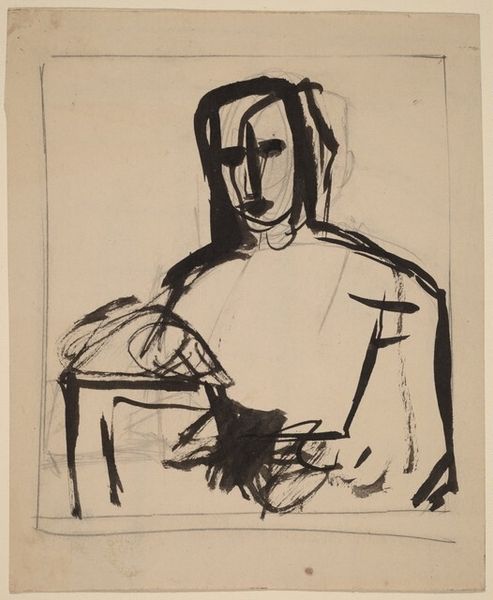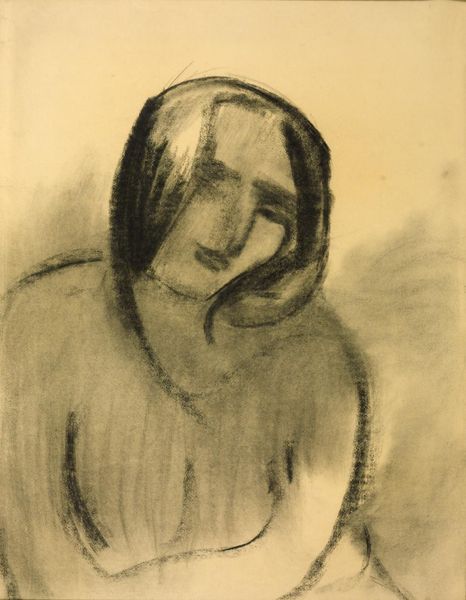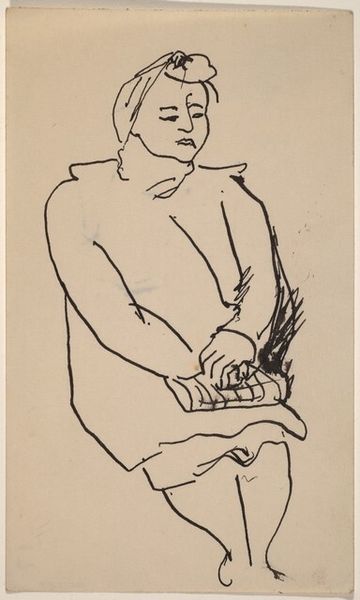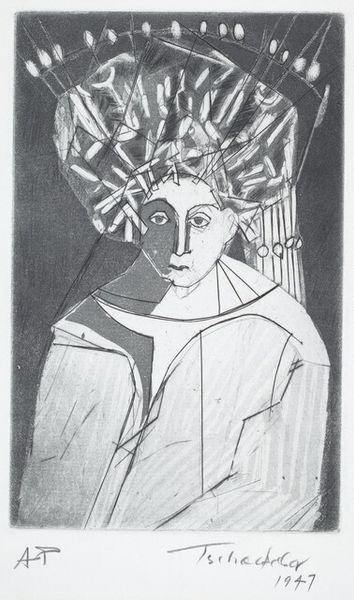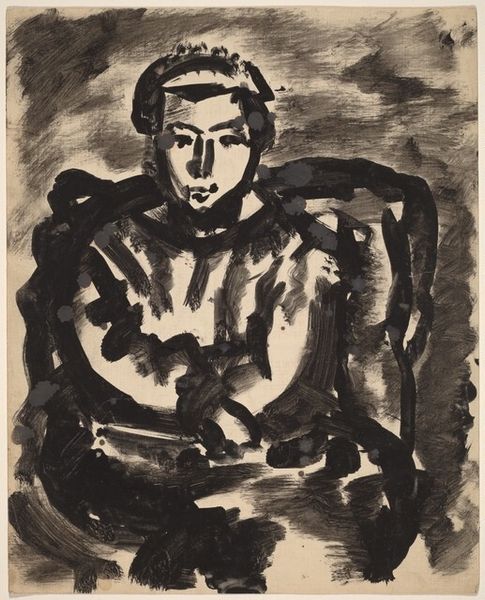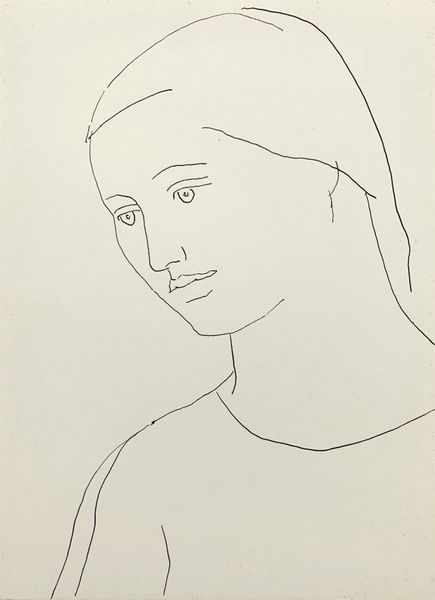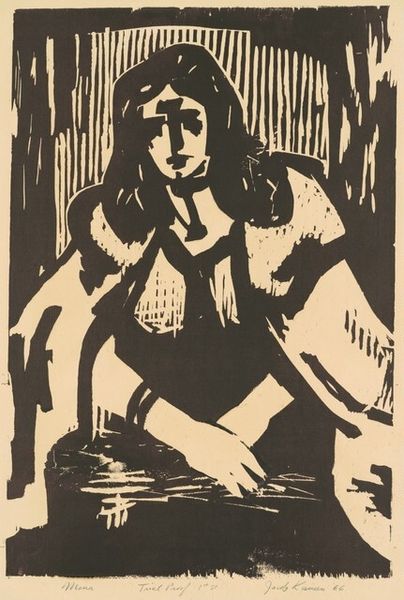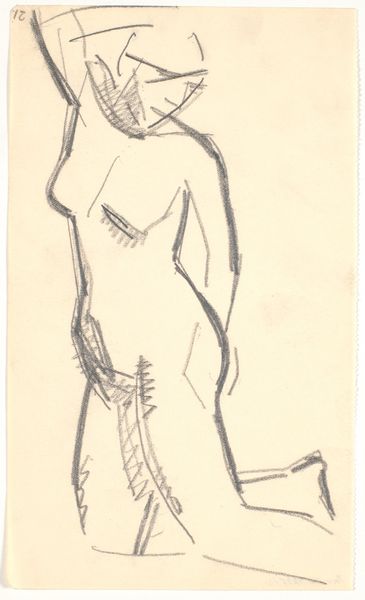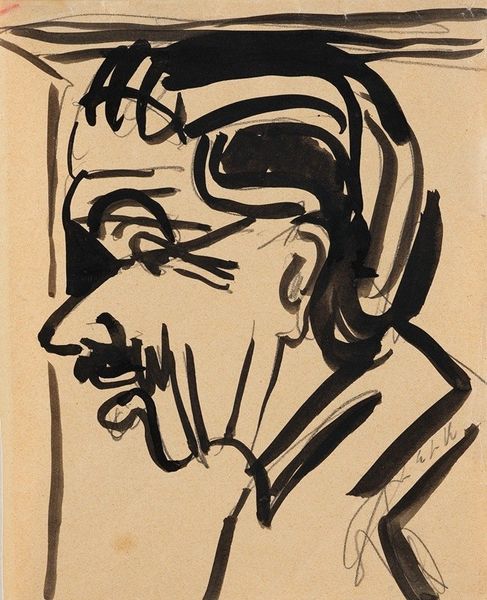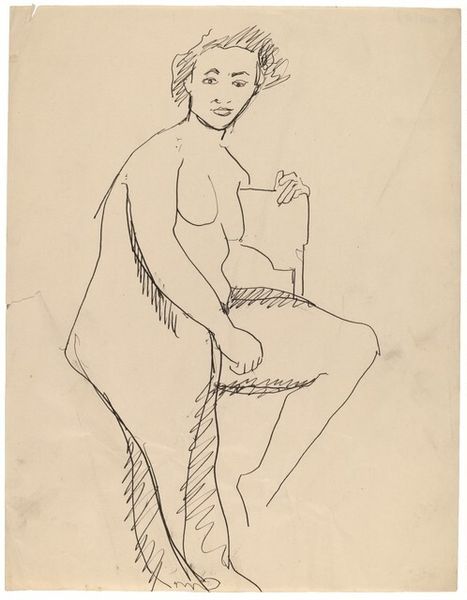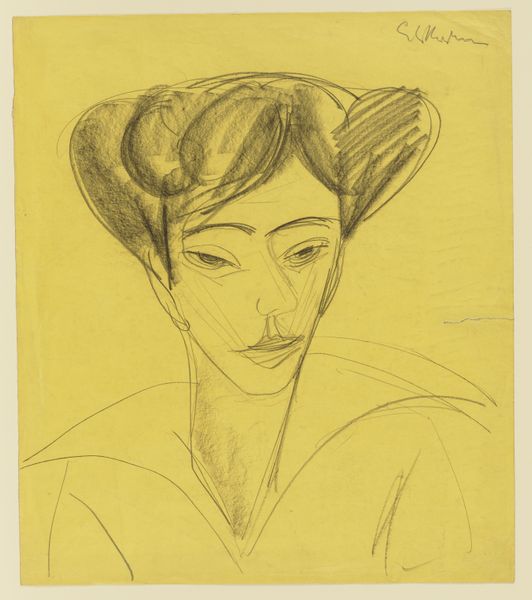
drawing, ink
#
portrait
#
drawing
#
caricature
#
german-expressionism
#
figuration
#
ink
#
expressionism
#
line
#
portrait drawing
#
portrait art
Copyright: Public Domain: Artvee
Editor: This is Ernst Ludwig Kirchner's "Mädchenkopf," a drawing from 1910 rendered in ink. The bold, stark lines immediately strike me. What sort of deeper meanings might you find embedded in this portrait? Curator: The power of this image rests, I think, in how Kirchner strips the subject down to her most essential, symbolic form. Those lines are hardly objective observations. Do you notice how the hat is rendered almost like an inverted crown? Editor: Yes, I see what you mean. There's something almost ritualistic about its shape. Curator: Precisely. This isn't merely a likeness, but a commentary. Kirchner's era was consumed by a quest for authentic experience, beyond social conventions, beyond merely appearing. He used stark forms to unlock raw emotion and connect to a deeper psychological reality. What emotions do the lines convey? Editor: Definitely not a sense of comfort or ease! Maybe a sense of introspection and internal struggle? Curator: Yes! Consider, too, how the symbols build on each other. The simplification flattens perspective, suggesting emotional weight that bends, even breaks, the familiar world around her. Expressionist artists were not just painting what they saw, but what they felt, what they collectively feared or yearned for. It resonates even today. Editor: It's fascinating how he can evoke so much with what seems like so little. The bare minimum becoming incredibly evocative. Curator: Exactly. The power of the symbol lies in its ability to ignite a whole history of emotions, and cultural meanings with minimal means. Each bold stroke feels like a cry from the depths. I now see Kirchner's ability to evoke complex cultural and psychological insights by visually stripping his work to the essence of symbolic forms. Thank you!
Comments
No comments
Be the first to comment and join the conversation on the ultimate creative platform.
